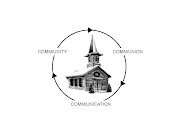
Living Hope Church in Brush Prairie, Wash. is one of the top ten fastest growing churches in the U.S. and the fastest growing in the Pacific Northwest. Why is it growing? What is it doing right? In what areas could it improve? How does it differ from those churches that seem to have stagnated? What works; what doesn't?
The answers may surprise you, but it all has to do with culture.
What is Culture?
Culture. The word can mean a variety of things. When thinking in terms of yogurt the word refers to “a growth of bacteria intentionally or specially made.” It can also refer to the cultivation or tilling up of soil; an improvement by study or training, especially of mind, manners and taste (i.e., refinement); the ideas, skills, arts, tools and way of life of a certain people in a certain time (a civilization); and/or the arts or the appreciation thereof.
Well, look at each of these in light of what we can glean from them—what meaning they have for how we do church—but in the end our model will be that which refers to yogurt.
Culture. The word can mean a variety of things. When thinking in terms of yogurt the word refers to “a growth of bacteria intentionally or specially made.” It can also refer to the cultivation or tilling up of soil; an improvement by study or training, especially of mind, manners and taste (i.e., refinement); the ideas, skills, arts, tools and way of life of a certain people in a certain time (a civilization); and/or the arts or the appreciation thereof.
Well, look at each of these in light of what we can glean from them—what meaning they have for how we do church—but in the end our model will be that which refers to yogurt.
But, What is an Active Culture?
An active culture is one that lives; it continues to reproduce.
The process of making yogurt has been around for eons. Some believe that the patriarch Abraham discovered the tasty dairy product. Essentially yogurt is quite easy to come by; leave milk out to collect bacteria and veolia--yogurt. Safe and consistently good yogurt, however, is an intentional science. Exactly which bacteria and how it grows is controlled and monitored. Then, when the product is at perfection, it is refrigerated (to stop bacteria growth) and shipped to be sold and enjoyed.
Commercially sold yogurt is a concoction of milk, sweetner (sugar and/or corn syrup), thickening agents (such as gaur gum, gelatin, etc.), coloring, flavors, pectin, maybe some fruit, a few vitamins and a bacterial starter. This starter (or culture) is made up of two lab-grown (cultured) bacterium: Acidophilus and Bifidum.
Acidophilus and Bifidum are the little “bugs” that turn milk into yogurt. The microscopic critters are very active in the process if the conditions are right.
According to my wife, who makes yogurt at home, the milk is heated to 180 degrees (but not boiled) then cooled to about 90-100 degrees. This is when you add the live culture (a “starter” from another batch of live yogurt). The culture spreads in the milk like yeast spreads in bread dough. The milk must be kept at this temperature for the bacteria to work its magic. Too hot the bacteria is killed. Too cold and it goes dormant.
Its Alive! Its Alive!
“It’s alive, it’s alive!” Dr. Fredrick von Frankenstein was ecstatic. He’d reanimated dead tissue—created life from death. It had been his life’s work; he’d been obsessed. He’d been working days on end, up nights, laboring on the point of exhaustion when all at once: a break through. Results. Success!
I was excited the first time I saw the church come alive. More next time.
An active culture is one that lives; it continues to reproduce.
The process of making yogurt has been around for eons. Some believe that the patriarch Abraham discovered the tasty dairy product. Essentially yogurt is quite easy to come by; leave milk out to collect bacteria and veolia--yogurt. Safe and consistently good yogurt, however, is an intentional science. Exactly which bacteria and how it grows is controlled and monitored. Then, when the product is at perfection, it is refrigerated (to stop bacteria growth) and shipped to be sold and enjoyed.
Commercially sold yogurt is a concoction of milk, sweetner (sugar and/or corn syrup), thickening agents (such as gaur gum, gelatin, etc.), coloring, flavors, pectin, maybe some fruit, a few vitamins and a bacterial starter. This starter (or culture) is made up of two lab-grown (cultured) bacterium: Acidophilus and Bifidum.
Acidophilus and Bifidum are the little “bugs” that turn milk into yogurt. The microscopic critters are very active in the process if the conditions are right.
According to my wife, who makes yogurt at home, the milk is heated to 180 degrees (but not boiled) then cooled to about 90-100 degrees. This is when you add the live culture (a “starter” from another batch of live yogurt). The culture spreads in the milk like yeast spreads in bread dough. The milk must be kept at this temperature for the bacteria to work its magic. Too hot the bacteria is killed. Too cold and it goes dormant.
Its Alive! Its Alive!
“It’s alive, it’s alive!” Dr. Fredrick von Frankenstein was ecstatic. He’d reanimated dead tissue—created life from death. It had been his life’s work; he’d been obsessed. He’d been working days on end, up nights, laboring on the point of exhaustion when all at once: a break through. Results. Success!
I was excited the first time I saw the church come alive. More next time.




No comments:
Post a Comment